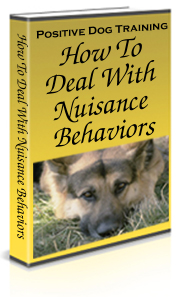You chose the basic dog training equipment to get started with your new dog. After a few weeks, you begin to think you made a wrong choice. Your dog is not responding as well as you would like. What do you do?
Well, the obvious is to first check your dog training methods, because it’s quite possible the problem is not with him, but with you. Make sure you are being consistent. Don’t let him get away with the bad behavior – not even once. Always correct him. Do not let him disobey one time and correct him the next. This will never work. Your dog will simply be confused.
Next, just make sure you aren’t confusing the dog with how you are correcting him.
Here’s a brief story.
The other day while I prepared to walk my dog, he would not stay in position long enough for me to attach his collar and leash. He would sit and raise his head, as dominant dogs do. Having him stand is far more effective, because he will then lower his head.
He understands the “stand” command, and did that without hesitation. But he would not hold perfectly still because he was so anxious to get going. I told him, “Wait!” without even thinking what it really meant to him. His previous owner taught him to “Wait” by sitting. So here we were in conflict. Me telling him to “Stand” and shortly after, “Wait”, and him standing and sitting as per my ever-changing commands.
It took me a few days to realize what I was doing wrong and I had to laugh at us.
So be careful of your words. We humans don’t always think what we’re saying and tend to blurt out what’s foremost in our minds. You can see the difficulty.
You have your dog training methods sorted. The next step is to consider a change in dog training equipment. Perhaps what you are using just does not apply sufficient pressure to let him know you are the boss.
When the plain buckle collar or choke collar does not work on your large dog, a prong collar can be quite effective.
Before you cringe at the thought, realize that this type of collar looks far more deadly than it actually is.
It is designed to fit snugly around the dog’s neck, high and behind the ears. The prongs can be used to resize the collar and for putting it on the dog. It should not slide. The part that attaches to the leash should be on the right side of the dog’s neck. Of course, this depends on your method – if you are right or left handed. If you walk with your dog on the right, then it should be on his left.
The part without the prongs should be under the dog’s throat where the neck is more vulnerable.
This type of collar is designed to pinch the skin evenly around the dog’s neck. This means that the correction is applied all around the neck, not in one place as with the choke collar. Less force is needed with the prong collar. It is especially effective on dogs that can ignore the effects of a choke collar or who have been allowed to pull on the leash for months.
Still struggling? Get these secrets to dog training.



